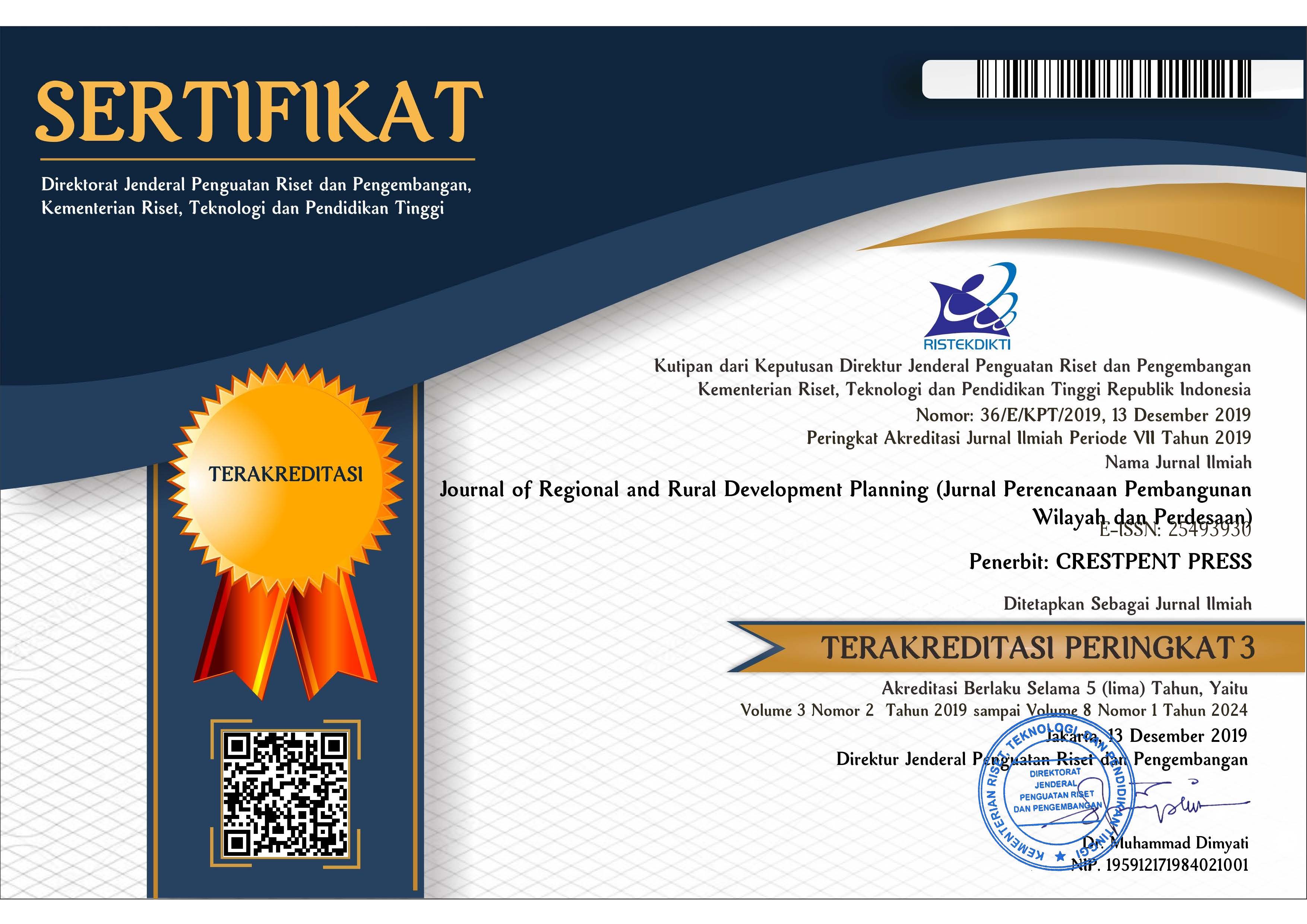Pemetaan Efek Spasial pada Data Kemiskinan Kota Bengkulu
Abstract
Anti-poverty programs and policies are designed similar for all regions in Indonesia, disregarding the local socio-culture and the poverty spatial pattern of the regions. The approach is based on central government’s program and not based on each region’s locality. This generic programming approach caused the achievement of development goals decline. The effect of space on poverty can be identified by the presence of spatial autocorrelation, which is the link between the examined variable to itself in a spatial manner or commonly referred to as spatial dependence.The aim of this paper is to investigate the global and local spatial autocorrelation for micro poverty data set in Bengkulu City in order to identify spatial approach for its anti-poverty program. Global Moran Index (MI) tests identifies the overall occurrence of autocorrelation, meanwhile the local spatial test shows which subdistricts has the presence of autocorrelation. Global and local MI are popular tools utilized to calculate the spatial effect, particularly to present spatial dependencies. The relation between urban village linkages obtained an MI value of 0.322. This MI value indicates the presence of spatial autocorrelation for subdistricts located in cluster. In local spatial effect observation using Local Indicator of Spatial Autocorrelation (LISA), its discovered that there are several subdistricts having autocorrelation, meanwhile the rest are not significant. Cluster mapping on global MI and LISA shows high-high poverty districts are located in the south of the city, low-high poverty districts in the east, and low-low high-low poverty districts near the city center.References
Anselin, L. (1992). Spatial Data Analysis with GIS: An Introduction to Application in The Social Sciences. California: University of California Santa Barbara.
Firmansyah, et al. (2012). Pemodelan Perkembangan Kawasan Permukiman Di Kota Surabaya Berbasis SIG. Thesis. Institut Teknologi Sepuluh Nopember.
Garvin, C. Q. (2014). Place and Poverty How Does Sprawl Affect Poverty Rates in U.S. Central Places. Disertation. California State University. Sacramento.
Hakim, L. & Zuber, A. (2008). Dimensi Geografis dan Pengentasan Kemiskinan Pedesaan. Media Ekonomi, Jakarta: Fakultas Ekonomi Universitas Trisakti.
Instruksi Presiden Nomor 15 Tahun 2010 tentang Upaya Percepatan Penanggulangan Kemiskinan.
Juanda, B. (2009). Metodologi Penelitian Ekonomi dan Bisnis. Bogor: IPB Press.
Laderchie, et al. (2003). Does it Matter that we do not Agree on the Definition of Poverty? A Comparison of Four Approaches. Oxford Development Studies, 3 (3).
Lee, J. & Wong, D.W.S. (2001). Statistic for Spatial Data. New York: John Wiley & Sons.
Lipton, M. (2009). Land Reform in Developing Countries: Property rights and property wrongs. Oxfordshire: Routledge.
Purnomo, C.P., Sabekti, W.S. & Sari, D. P. (2014). Factors and Spatial Pattern Analysis of Land Price Indonesia. FIG Congress. Kuala Lumpur.
Rustiadi, E., Saefulhakim, S., & Panuju, D.R. (2009). Perencanaan Pengembangan Wilayah. Bogor: Crespent Press & Yayasan Obor Indonesia.
Syafitri, U.D., Bagus, S, Salamatuttanzil. (2008). Pengujian Autokorelasi terhadap Sisaan Model Spatial Logistik, Makalah Seminar Nasional Matematika dan Pendidikan Matematika. Univeristas Negeri Yogyakarta.
Syafitri, U.D., Sholeh, A.M., & Suprapti, P. (2008). Simulasi Radius Jarak Pengaruhnya terhadap Kebaikan Model Regresi Logistik Spasial. Makalah Seminar Nasional Matematika dan Pendidikan Matematika. Univeristas Negeri Yogyakarta.
Thaib, Z. (2008). Pemodelan Regresi Logistik Spasial dengan Pendekatan Matriks Contiquity. Skripsi. Institut Pertanian Bogor.
Vasilief, I. R. (1995). Visualization of Spatial Dependence: An Elementary View of Spatial Autocorrelation. Practical Hand Book of Spatial Statistics, 17-30. Arlinghaus
Zhukov, Y. M. (2010). Applied Spatial Statistics in R, Spatial Regression. IQSS, Harvard University.
Copyright (c) 2017 Journal of Regional and Rural Development Planning

This work is licensed under a Creative Commons Attribution-ShareAlike 4.0 International License.




.png)














